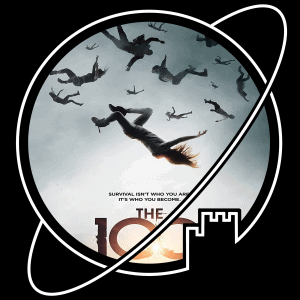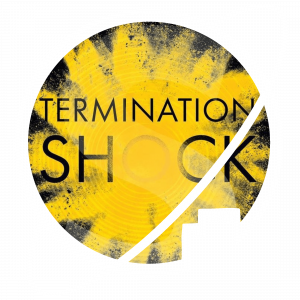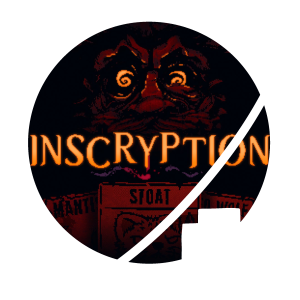Welcome to the Escape Velocity Collection!
We are an opinionated group of friends reviewing all sorts of fantasy and science fiction media. Don’t forget to get to know the curators and visit our curated Collection, where we discuss the stories that never cease to transport us to another world.
Will you escape with us?
LATEST POSTS:
Robin
Check out our reviews of the media recommended in this post here:
It’s starting to get cold again here in the Netherlands, so looking ahead to the coming months I thought I would do this winter-themed book tag by MarissaWrites, to give you some tips for books that will get you through the winter.
Falling Snow: The colors of winter are muted. Choose a book that has whites, light blues, and grays on the cover.
I really love this cover of Spinning Silver by Naomi Novik. It is a very wintry book as well, so it fits in perfectly with this tag.


Crackling Fires: Colder weather makes for the perfect time to sit by a crackling fire in the fireplace. What book is the best to curl up next to a warm fire with?
His Dark Materials by Philip Pullman is the perfect trilogy to get you through the long winter days.
Ice Storm: Winter storms can be brutal. What book do you love that takes the characters through a brutal season?
The Snow Child by Eowyn Ivy is a beautiful book about resilience and hope that really manages to make you feel the brutal cold of the Alaskan winters through its pages.


Winter Wishes: Spending more time indoors allows for more time to dream and wish. What character is living a life that you dream about?
While I love reading about exciting adventures, I rarely feel like I’d want to live through them. However, I would give a lot to be able to visit Erin Morgenstern’s Night Circus for an evening or two.
Hot Cocoa: There is nothing like a hot cup of cocoa during the winter, as adults we often under estimate it. What book do you think should be the next big thing?
Tales from the Inner City by Shaun Tan is a strange and beautiful book of short stories about the relationship between humans and nature, which deserves to get more attention.


Lip Balm & Lotions: Soothing dry skin is part of the winter for many. What book is full of soothing & comforting words?
What’s more comforting than (re)reading an old and beloved classic? Tolkien’s The Hobbit is perfect for this.
Peppermint Mocha: What is your go to winter food or drink for those reading marathons of winter?
Around this time of year there’s only one appropriate snack: pepernoten!

Hopefully this list has given you some suggestions you weren’t yet familiar with! If you do read any of these books, let us know what you thought of it on one of our social media channels.
- Book written by Andy Weir
- Published 14 November 2014
- Standalone
Jazz Bashara lives in Artemis, earth’s first colony on the moon. She is also poor, a petty criminal and a deep disappointment to her father, who is a well-respected member of the community. In his eyes, Jazz is capable of so much more than her current job as a porter. He’s not wrong: when the chance at a really large stack of money comes by, Jazz is first in line to take the opportunity, legel or not. She soon realises, however, that the job got her entangled in a game with the future of Artemis itself at stake…


“Does for the moon what the Martian did for Mars!” is one of the cover blurbs for my version of this book. Which is fascinating, because, unlike most blurbs, it’s not just praise taken out of context – it’s not even praise at all. It’s just a description. In a blurb.
It’s surprisingly apt, however, and probably good marketing. Weir is known for The Martian, and if you liked that and want more, well, there is Artemis. You don’t need some snob from the Guardian telling you whether it is good or not. And the book is probably not intended for people who haven’t read The Martian yet.
So what am I doing, trying to review this book? It seems pretty simple – if you enjoyed The Martian, you’ll enjoy this one too, right?
Broadly speaking, that’s true. The story is told in a very similar talk-to-the-camera, snappy, sassy, upbeat, no-drama style. The characters encounter relatively similar types of issues in a relatively realistic near-future sci-fi world. Weir makes his usual blatant mistakes in international space law. It reads very easily, is very well-paced, is humorous at times. It gives you a good idea of what a city on the moon in the relatively near future might look like, just like The Martian did for a Mars mission. If those were elements you enjoyed in The Martian, you’ll probably enjoy them here too.
There are differences too, however, and generally speaking, The Martian comes out on top. For me, the most obvious difference is that while both stories are fiction, the challenges Jazz faces in Artemis felt a lot more made up than Watney’s struggle in The Martian. This is probably because the setting of a moon colony is simply a lot more flexible, meaning that Weir has some more leeway in making Jazz’ life easy or tough as the plot demands. The result is that while reading Artemis, I never really felt like Jazz’ life was in danger. And where Watney’s motivation is very clear from the very start of the novel, Jazz’ seems to be all over the place.
Perhaps more importantly, Artemis feels a bit like Weir’s publisher told him to just do the same trick in a new setting – and some of what made The Martian original and compelling is gone. Instead, we see other more traditional plot devices enter the stage – elements of romance, crime, politics, etc. Weir seems to have had Neuromancer‘s Freeside space station very firmly in mind when designing Artemis. It could be argued that Artemis sits in strange spot somewhere in between whatever The Martian is and traditional science fiction. That seems really cool, but didn’t work as well for me as The Martian did – but it might for you!
One final thought is that the book manages to sexualise Jazz’ character quite a lot, despite being told from her own perspective. I have nothing against a sex-positive main character, and perhaps this is just me being prudish, but some of the things Jazz thinks and does feel very ‘male gaze’. Make of that what you will.
in conclusion, you may have noticed that I referenced The Martian a lot in this review. That is because it is quite simply a very similar, but also clearly better book than this one. So if you haven’t read that one yet, go read it first and come back after. If you have read The Martian and liked the style, I am sure Artemis has something to offer for you as well. It is quick, witty, easy to read. Just don’t expect it to be equally good.
Tagged:
- Book written by Becky Chambers
- Published February 2021
- Part 4 of The Wayfarers Series
The Five-Hop One-Stop is a temporary stopover station for traveller’s awaiting their turn for the nearby wormhole. When an accident temporarily suspends all incoming and outgoing traffic, three strangers find themselves stranded with nothing to do but wait. Under the care of Ouloo, the host of the Five-Hop, they will discover many unexpected things about each other, and also about themselves.


Becky Chambers’ books are generally known to focus a lot more on characters and their interactions than on plot, but this book might have hit a new extreme. Seriously: Nothing. Happens. At. All. That sounds exactly like the kind of story I would normally enjoy, and indeed: I (predictably) really liked it.
If you have read any of the other books set in this universe, this story will feel immediately familiar. It has all the hallmarks of a Becky Chambers novel: a diverse set of characters of different alien species, navigating their differences while being generally very wholesome and lovely. This book in particular puts a lot of emphasis on prejudice, bodily difference and privilege, but overall its message is one of hope.
While the four books set in this universe could be read in any order, I think you will enjoy this one more if you have read The Long Way to a Small Angry Planet first, because it gives a bit of context to some of the elements in this book. If you did not enjoy the first book, then I do not think this one will be more to your liking.
Tagged:
LOTTE
Check out our other posts on content mentioned here:
For the past few… months, I should say, I’ve been listening to the audiobook of To Sleep in a Sea of Stars by Christopher Paolini.
I must admit that since reading Eragon a couple of years ago, I’ve been conflicted about Christopher Paolini. To put it plainly… I really hated Eragon. It read like it was written by a 15 year old – and it was. However, my problem was never with Christopher Paolini. After all, A 15 year old writing a novel is quite an impressive feat. The chances of that novel actually being good were always gonna be rather slim, especially when you consider that the book was never edited by a proper editor.
Still, Eragon was written 15 years ago. Paolini is an adult now, and To Sleep in a Sea of Stars was published by an actual publishing house. When I started this book, I was really rooting for Paolini. Unfortunately, even the book that I kept mentally referring to as his “redemption arc” wasn’t able to win me over.
In order to not be overly negative, I want to preface this article by saying that I don’t actually think Paolini is a bad writer at all. The prose of To Sleep in a Sea of Stars is very well written and never bothered me. One could argue that it takes more than that to make someone a good writer, but as far as I’m concerned, this book only needed a couple of adjustments to make it pretty good. It’s really the wasted potential for me. So what I want to do here is not just point out all the things I didn’t like about the book, but actually offer my insights into how I think this book could have been improved.
But let’s start with the bad stuff.
Oh Kira… Kira, Kira, Kira. When I was listening to the book, I would occasionally make a note of how I felt about it. It was taking me a really long time to get through, and I was worried I would forget what I thought of the beginning by the time I had reached the end. Some of my original notes are… interesting, looking back.
Let’s start with the very first bullet point. A real doozy:
“A little slow but Kira is interesting”
It only took me 10 hours of listening (that is, a third of the book) to add: “is she though?”.
ANYWAY.
This… is the story of Kira.
KIRA
Meet Kira. She’s a badass. Nothing affects her. She’s totally chill, all of the time. Some of her tough shell might have been explained by her background, except that it isn’t. Kira is a scientist. She’s been single for a really long time before meeting her current fiancé, Allan, who gets fridged so quickly and efficiently he isn’t even mentioned by name on the Wikipedia page of the book, so God only knows if I’ve spelled his name correctly.
I’ll give you an overview of what can only optimistically be called the “plot”, in case you’ve not read the book (good for you!) or you have and you’ve forgotten (or repressed) what happened.
God I was really planning to be nice in this review, I’m sorry.

THE PLOT
Anyway, what happens is Kira accidentally touches some space dust that turns out to be ancient alien nanotechnology that covers her in a protective, but aggressive skin-tight suit that accidentally kills her team mates and her boyfriend, Allan. She then gets taken into custody by a special division of the military who do some experiments, but then the ship is attacked by the Wranaui, or “Jellies” as they are more commonly referred to. The Jellies are pissed that the “Soft Blade” – Kira’s nanosuit – has been activated, and also about the creation of a corrupted being called “the Maw” that floats through space and is evil? Anyway Kira accidentally created it with her suit, and the Jellies have started a war with humanity for the above reasons and it’s all real bad.
Kira escapes and finds herself rescued by a smuggler ship called “The Wallfish”. On this ship (I just accidentally typed “shit” instead of ship – and that’s fair) she meets a host of characters, none of whom are relevant enough to be mentioned in the synopsis on Wikipedia.
BUT THEN!
Kira has a Vision!
In her dreams, her suit shows her images of “The Staff of Blue”, a cool ancient relic that could somehow stop the Jellies and end the war. How? Kira doesn’t know, she never finds out, and so we never know either. Why?
Because when they get to the Staff, it turns out to be broken.

Unfortunately, at this point the book is still not over. We're only about halfway through and nothing of interest has happened yet.
On the planet they were supposed to find the Staff of Blue, they instead get saved by a rebel faction of the Jellies. They propose a partnership, in order to kill the real bad guy. The great and Mighty Ctein is the long-reigning emperor of the Wranaui who only now gets mentioned for the first time. He‘s the real bad guy, I swear! (He’s not).
Anyway, the humans have to be the ones to kill Ctein, as the Jellies have been programmed to be unable to kill their leader.
Did I mention that Kira has learned to use her suit as a weapon at this point? But also maybe it was meant to create life instead. Anyway, moving on…
There’s a bunch of fighting and then they kill Ctein. I tried to be happy but I knew full well that I still had several hours to go in the book.
So Ctein’s dead, which no one cares about because he was the main antagonist for approximately 0.2 seconds. The real problem is the Maw!! The what, you ask? Remember the bad thing Kira created at the start of the book? I sure didn’t, but it’s back and it’s bad.
Also somewhere in there Kira loses an arm but she’s so cool about it that it also didn’t make it into the Wikipedia synopsis.
Kira manages to subdue the Maw by being Good and Nice at it, and she stops all the bad aliens. She merges with the Maw, turning herself into a spaceship (??), only to reveal at the very end that actually the Maw had also created 7 horcruxes somewhere along the way so she has to go kill those, presumably in a sequel.
Are you still with me? Yeah, no. Didn't think so.
Please save me. This book is legitimately 900 pages long and I don't deserve this.
Honestly, I hesitate to call the story in this book a “plot”. Paolini seems to make an attempt at giving the novel a plot a couple of times, but it never really develops into something with – you know – a beginning, a middle, and an end.
Let’s look at the plots in this book, shall we?
Let me warn you first: this books starts with hours of set up. HOURS.
Plot 1: The Staff of Blue, or: the Plot without a middle
This is where I thought the real plot began, and I was both relieved and hesitant. “The Staff of Blue” has very strong fantasy connotations. The magical artefact that will end the war is something you may accept in a fantasy story (though even then, you’d probably appreciate some explanation as to how it’s going to end the war), but in Sci-Fi…? As far as I’m concerned, the strength of Science Fiction lies in the explanations of why things work a certain way, which may differ from what we are used to. Still, you expect there to be an internal consistency.
Anyway, none of it matters because the Staff of Blue was a red herring all along! Explain to me why a 900 page book needs to spend like a 100 pages on a plot that doesn’t go anywhere? As far as I’m concerned, this whole storyline could have been scrapped.
This plot doesn’t have a middle: Kira has a vision of the Staff of Blue, and they find it. There’s no real journey to find it. They just travel to the planet where the Staff is, and then the story ends because the staff is broken. No middle.
Plot 2: Ctein, or: the plot with no beginning
Having freshly detangled ourselves from the disappointment of the Staff of Blue plot, we’re thrown head-first into a new storyline. All I remember about this part of the book is lots of exposition about Ctein (obviously, this is the first we’ve heard of him and he’s the big bad now, so…).
This storyline has no beginning. We get no build up towards Ctein being the villain, we’re just thrown into the middle of a power struggle with no personal vendetta against the bad guy. No start.
Plot 3: The... Maw??, or: the plot without an end
This one is very simple. The last plotline literally doesn’t even end. When we leave Kira, she still has to travel through space to track down the Maw’s 7 Horcruxes. It literally doesn’t end! This book is 900 pages long, are you serious??? It’s not even set up as there being potential for a sequel, it’s set up as “this story isn’t finished but at this point we can literally fit no more pages into this book”.
Do you know how robbed I felt? After 30 hours of my life, to have any kind of satisfying ending be withheld from me? I would have listened for up to 2 more hours for a good ending. TWO MORE HOURS. I deserved it. And he just… shoved it in my face.
Something good! - The characters
One of the strong points of this book were the characters. I really could have liked them, if it weren’t for the fact that the book is so long-winded that every scene that wasn’t directly related to the plot wound me up to no end.
Trigg
Trigg is that cute happy-go-lucky character you really like, except he spends most of the novel being incapacitated. By the point when he comes back to consciousness, I had reached the point that I found everything that was happening annoying. Including Trigg.
Falconi
Now Falconi had potential! It’s very clear from the beginning that he and Kira are gonna have a thing and I was dreading it from his very introduction. It was awful for all the wrong reasons, though! I thought Kira was gonna feel super guilty towards Allan, but she’s over it at that point! So was I, to be fair, but I wasn’t engaged to him.
Anyway, the real reason it was awful had more to do with them getting it on but Kira also wearing a skin tight nanosuit that she couldn’t remove. Luckily she figured out a way just in time for them to bang. Ugh.
Gregorovich
Greg was the only really interesting character in this book and he knew it.
As the “shipmind”, a person who has lost their body to become one with a ship, he had some really interesting scenes. Especially when he was the only one who was unwilling to sacrifice his life to, like, save the galaxy or something (it happens in one of the plots, I don’t remember which one, though). Of course, the things that I think are a really big deal constantly get fully glossed over in this book, so they just force him to do it and move on. No but for real – they don’t give him a choice.
These are the good guys, did I mention that?
What would I have done?
To fix this novel, I would have turned it into three books.
Book one:
The way I see it, the first book is about Kira getting the suit, her confrontation with the military and her ending up on the Wallfish and winning over it’s crew. Throughout all of this, Allan would be alive. Kira isn’t a scientist, but she’s a soldier. Or maybe she’s a scientist who’s in the military – at least something that explains her being so cool under pressure all the time. Also maybe she isn’t so cool under pressure the entire time. Can you imagine?
The Jellies have been alerted by Kira awakening the suit, and they see it as an act of war.
The book ends with a confrontation with the Jellies and in her attempt to fight them off, Kira inadvertently lashes out, killing Allan in the process.
Book two:
Kira has ideas about how to stop the Jellies based on something she’s seen in a vision – why not. However, instead of her seeing some ancient artefact and assuming it will fix everything, she pieces things together. Somehow – perhaps because of her scientific expertise, mixed with things she’s seen in visions – she thinks of a way that they could stop the Jellies.
So book two is all about them trying this plan of Kira’s, and in the end it fails. However, they meet this rebel faction of the Jellies, who explain that the majority of the Jellies have been corrupted by the Maw, and they have to stop it with the power of friendship or whatever.
Book three:
Book three is all about the struggle against the Maw. Kira finally comes face to face with the Maw, and she is horrified to see that the monster was her fiancé Allan all along. When she lashed out and killed him in book one, she corrupted him with her suit and turned him into a monster.
Kira eventually chooses to merge with the Maw, and subdue the corruption with her Soft Blade magic. There’s a touching scene as she reunites with Allan, and Kira realises that she can release Allan if she lets herself be absorbed by the Soft Blade. Kira knows there always needs to be someone there to prevent the Maw from corrupting again, but she can let Allan go. She, herself, can never return to living a normal life, but he can.
Conclusion
Look: Christopher Paolini can definitely write. I think the main reason I found this book so frustrating was that it had so much potential, but got dragged down by its convoluted story arc. That’s why I didn’t want to just trash it in a review (though I’m not sure how well I’ve succeeded at that) but to actually focus on how I would have changed the book to highlight what’s good about it instead (once again, not sure how well I’ve done with that).
I just… feel like Paolini needs a really obnoxious editor.
(Chris, buddy, I’m available)
So, will I ever read a Paolini book again? Honestly… probably? He just has such potential and I’m sure one day he will live up to it. But maybe I’ll read some reviews first.
Also they’re making a movie?????
What did you think about to Sleep in a sea of Stars? Was any of this recognisable to you? We'd love to hear it on any of our social media channels! Please, tell me I'm not crazy here.
- Movie directed by Wes Ball
- Based on The Maze Runner by James Dashner
- Starring Dylan O'Brien,, Aml Ameen, Ki Hong Lee, Kaya Scodelario, Thomas Brodie-Sangster, Will Poulter, Patricia Clarkson
- Released in 2014
- Runtime: 113 minutes
- Part one of a trilogy
A teenage boy, his name later revealed to be Thomas, wakes in the center of a giant maze without any memories of his identity and previous life. Taken in by a community of other male youths, Thomas quickly learns the Maze is not as safe as one might hope. In the search for answers and a possible escape route, Thomas strives to join the Runners, a branch of boys that daily risk their lives to discover the many passageways of the Maze.


This movie was an interesting experience. I watched for about an hour and a half, just fascinated by the worldbuilding mysteries. Then I suddenly realized that I was close to the end while it felt like the story had yet to truly start. In that regard, there can be no doubt this is the first part in a trilogy.
The action-packed story of The Maze Runner is fully supported by its intriguing central concept: a giant maze, filled with deadly creatures, in which a small community of boys has to survive. Unfortunately, neither the characters nor the plot are convincing enough to be truly captivating, something I don’t believe is the actors’ fault. Also, an unregrettable side-effect of the central concept, is the severe lack of female characters. The one (and only) real female character that does appear has a negligible role.
It could be the result of the rendition from book to film, but at the end of The Maze Runner I was left with many unanswered questions, a few plot holes and a minimal emotional connection with the characters. I was entertained, though. The worldbuilding and the action scenes were stimulating enough that I wanted to see the next movie. I suspect others might appreciate it too.
Tagged:
This playlist contains SPOILERS for the Mass Effect series. Proceed at your own risk.
Happy N7 Day! For today, I wanted to share a playlist I made for Commander Shepard.
I’m always a huge Goody Two-shoes in video games. It should come as no surprise, then, that my Shepard was a Paragon. I also have only ever played as FemShep, because Jennifer Hale plays the role so delightfully that I’ve never even considered playing another gender. This playlist is mostly based off of my own experience of the game, so I’ve made sure to mention why I’m including each song.

LOTTE
Find the whole playlist on Spotify:
Check out our other posts about Mass Effect here:
1 - Raise Hell - Dorothy
I like to imagine that Shepard really enjoys raising a little hell. Also this is just a banger to start with.
2 - One Woman Army - Porcelain Black
She’s a Girlboss, ladies and gentlemen!! Gatekeep, Gaslight, Girlboss, u know how it is.
God, that was a joke of course, but Miranda definitely has girlboss energy.
3 - Bulletproof - La Roux
Don’t ask me to come up with deep reasons for every song. Shepard is a soldier and they fight with bullets and stuff.
4 - Die Young - Sheppard
Haha, get it? The performer’s called Sheppard, the song is called “Die Young”, and I’m gonna go cry in a corner now 🙂
5 - Unbreakable (feat. Clarence Coffee Jr.) - BUNT., Clarence Coffee Jr.
Shepard’s been through a lot, including some stuff they really shouldn’t have survived.
6 - A Sky Full of Stars - Coldplay
Space! Stars! Science Fiction!!
7 - Radioactive - Imagine Dragons
Waking up after being put back together by Cerberus must have been quite the… experience. I find that Radioactive captures the feeling well.
8 - Believer - Imagine Dragons
Everyone’s always trying to tell Shepard what to do. Both the Citadel Council and Cerberus are a constant thorn in her side. Things go best when Shep does what they themselves think is best.
9 - COPYCAT - Billie Eilish
The Citadel DLC is by far my favourite part of the Mass Effect series. This song is a shoutout to Shepard’s clone. Don’t hate me cuz u ain’t me.
10 - Children of the Stars - The Orion Experience
Another ~Space Song.
11 - Space Girl - Frances Forever
Even though I’ve never romanced any of the ladies in the Mass Effect series, I’ve always been convinced Shepard was pretty gay. I actually wanted to romance Sam Trainor in Mass Effect 3, but after googling read somewhere that she couldn’t be romanced, so I didn’t even try. Little did I realise back then that that post was written by a man and Trainor, like, specifically was a lesbian. One day I will romance her. One dayyy.
12 - Solitaire - MARINA
I played the Mass Effect series in the span of perhaps a month. I was also listening to MARINA’s Froot on repeat at the time. The intro to Solitaire reminds me so much of the menu screen for Mass Effect 3. It’s also a sad song and Mass Effect made me very sad.
I hope you enjoy this playlist! As I mentioned, it’s very much based on my own experience playing the game. Would you replace any of the songs to better fit your Shepard? Be sure to let us know on any of our social media accounts! I’d love to hear what you would choose.

Recommendation: Winter-themed Book Tag
Looking for books to get you through the winter? See what our curator Robin recommends!

Review: Artemis – Andy Weir
Jazz Bashara lives in Artemis, earth’s first colony on the moon. She is also poor, a petty criminal and a deep disappointment to her father. When the chance at a really large stack of money comes by, she can’t pass up – but gets entangled in a game with the future of Artemis itself at stake.

Review: The Galaxy, and the Ground Within – Becky Chambers
Part 4 of the Wayfarer series – The Five-Hop One-Stop is a temporary stopover station for traveller’s awaiting their turn for the nearby wormhole. When an accident temporarily suspends all incoming and outgoing traffic, three strangers find themselves stranded with nothing to do but wait. Under the care of Ouloo, the host of the Five-Hop, they will discover many unexpected things about each other, and also about themselves.

Fiction Fix: To Sleep in a Sea of Stars by Christopher Paolini
LONG FORM – After spending 30 hours of her life on the audio book of “To Sleep in a Sea of Stars”, Lotte needs to get some stuff off her chest. Want to know what she thought could have been improved? Read on!

Review: The Maze Runner – 20th Century Fox
A teenage boy, his name later revealed to be Thomas, wakes in the center of a giant maze without any memories of his identity and previous life. Taken in by a community of other male youths, Thomas quickly learns the Maze is not as safe as one might hope…

Playlist – Favorite Store on the Citadel – Commander Shepard
Need something new to listen to? Why not try this playlist inspired by Commander Shepard from the Mass Effect trilogy, curated by Lotte?





















